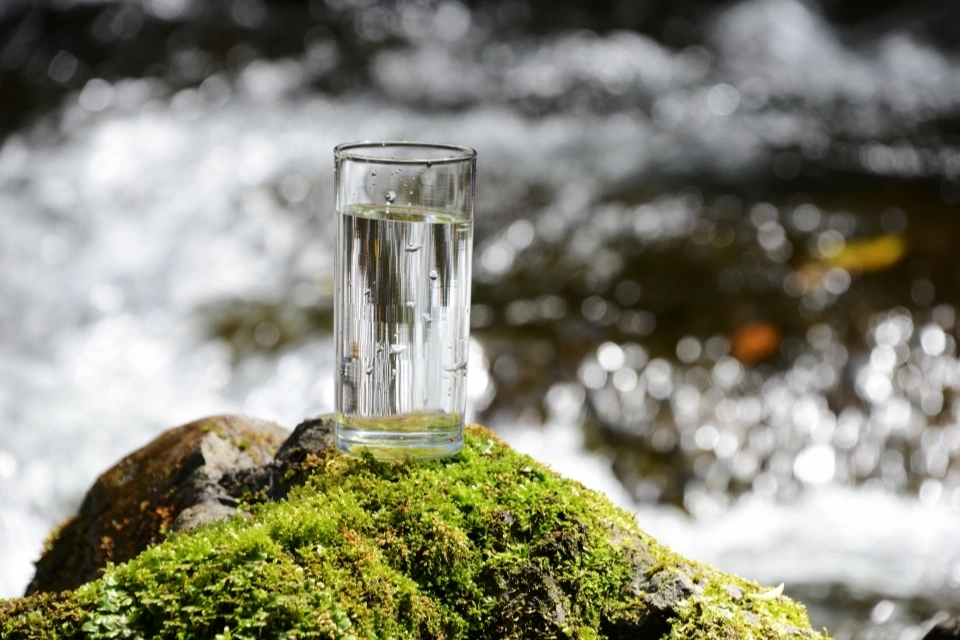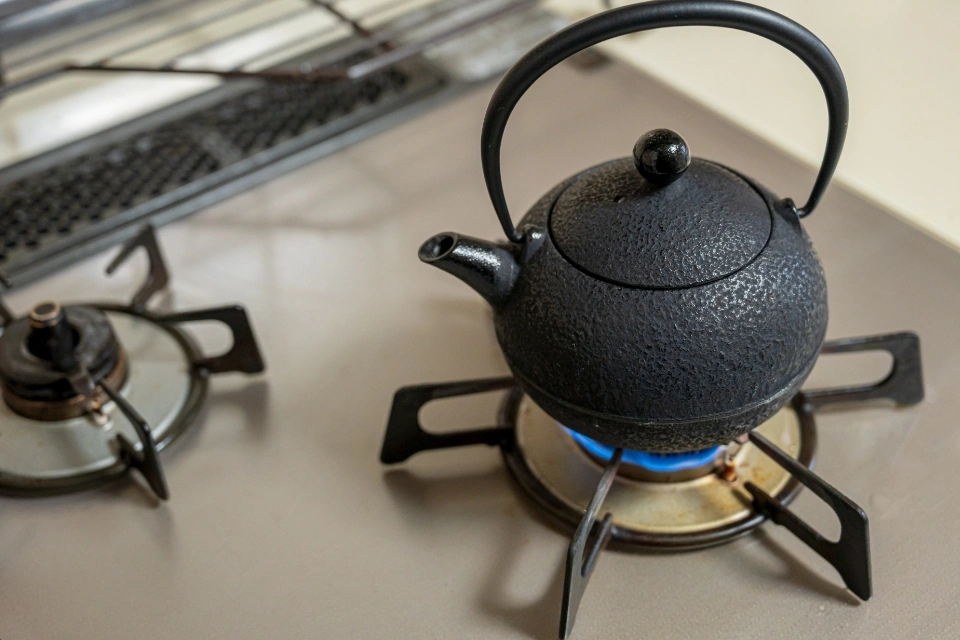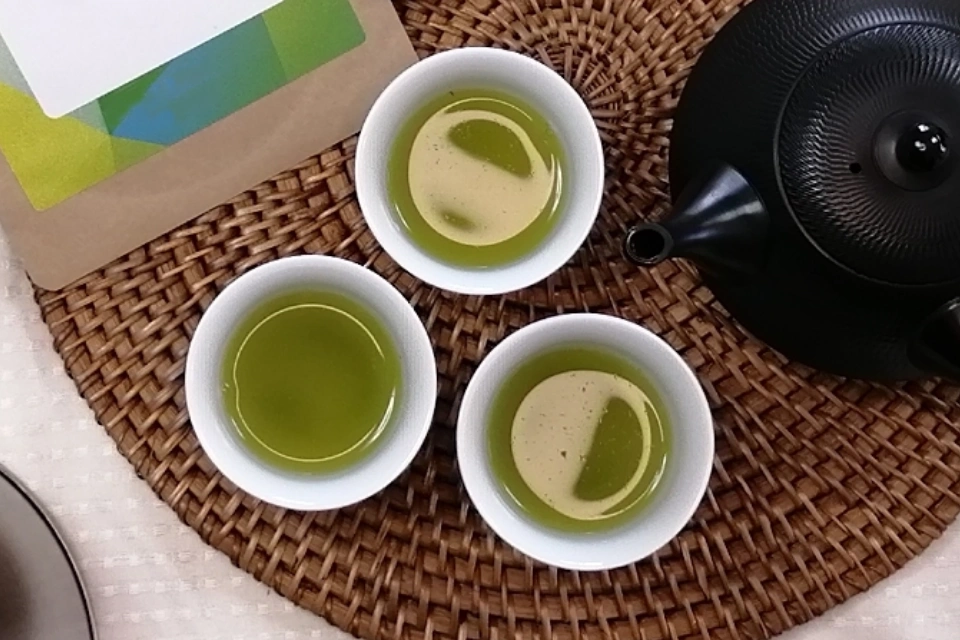No matter how good the tea is, if you choose the wrong water, the taste and aroma will be lost. On the other hand, by choosing the right water for your tea, you can enjoy a higher-grade flavor even with ordinary tea.
At Kanehachi, we want everyone to know about the good relationship between tea and water and enjoy tea even more deliciously, which is why we are so particular about water.

In areas where tap water is said to be of poor quality, many people make tea with mineral water.
In this case, until now, it has generally been said that soft water is best for tea, and that ``mineral water from overseas is generally hard, so it is not suitable for Japanese tea. However, recently, it seems that the view = common sense has changed a bit.
Brewing green tea with European mineral water, which has a hardness of around 300, eliminates the astringency and gives it a sharp taste, making it delicious. It seems like it's becoming a bit of a craze among people who don't like the bitter taste of tea.
When it comes to the debate about whether soft water or hard water is suitable for tea, it depends a lot on the preferences of each person, so which is better? It cannot be said for sure, but in any case, the choice of water is extremely important in order to enjoy the most delicious tea.
The next most important thing after choosing water is how to boil it to take advantage of its goodness.
Here's a tip: If you're using tap water, open the kettle lid and bring it to a boil to get rid of the limescale odor. However, please be careful not to boil it too much. The more gases there are in the water (hot water), the more fragrant and refreshing the tea will be, so be careful not to boil it too much and let the air in the water escape.
*If the water has a particularly strong chlorine odor, it is important to take measures such as letting it drain overnight or using a water purification device.

Deep steamed tea is recommended in metropolitan areas where tap water is generally said to be of poor quality.
Deep steamed tea is steamed for a longer time than regular sencha, so it has a slightly weaker aroma than sencha, but you can easily enjoy its rich richness and flavor without using water.

If you live in an area with good water quality that has been selected as one of the top 100 waters in Japan (Ministry of the Environment), we recommend lightly steamed sencha.
The fresh, elegant, and refreshing aroma and soft, delicate taste will surely make your regular tea time a special one.

If you leave tap water out overnight and add charcoal, the limescale odor will be deodorized and the water will become mellow. If you brew it with that water, you can enjoy an especially delicious tea.
Fresh tea brewed with delicious water has a brighter taste and aroma, and you will enjoy its particularly gorgeous aroma. But be careful, if you brew it with water that smells like chlorine, the original flavor of fresh tea will be ruined...

Generally speaking, the optimum temperature for hot water for brewing tea is said to be around 80℃, but in the case of new tea or high-quality tea, it is better to let it cool even further to bring out the original flavor of the tea. Fresh tea brewed at an appropriate temperature has a well-balanced sweetness and astringency of amino acids such as theanine and catechin, allowing you to ingest all the health components contained in tea.

Be aware that fresh tea brewed in boiling water will contain more catechins, which are astringent components, than amino acids, which are sweetening components, and the taste will be unbalanced, resulting in a strong, astringent, and bland taste.
If you want to brew tea with tap water at home, you can brew a mellow and delicious tea by letting the tap water stand overnight, boiling it for at least 3 minutes, and cooling it to the appropriate temperature before using it.
Kanehachichaen’s tea can also be purchased at the following online shops.
We have a variety of standard products and seasonal recommended teas, so please take advantage of them.